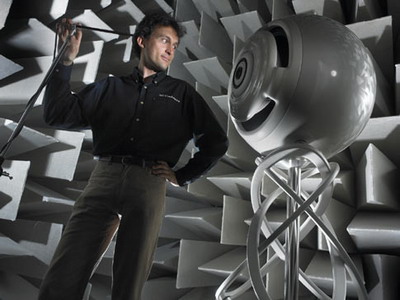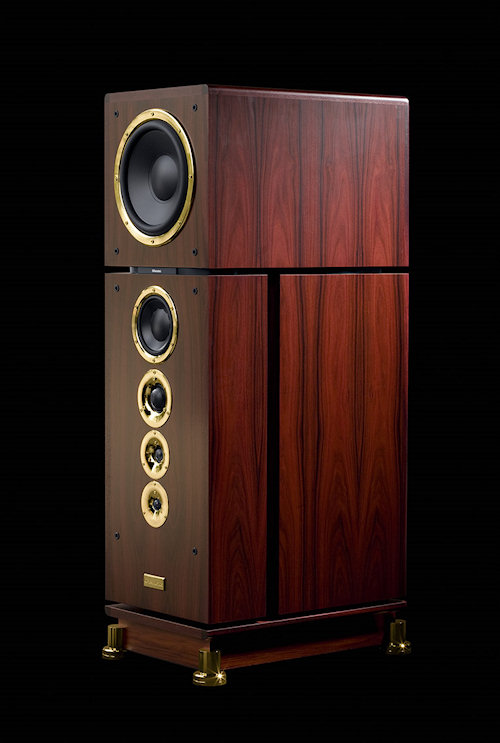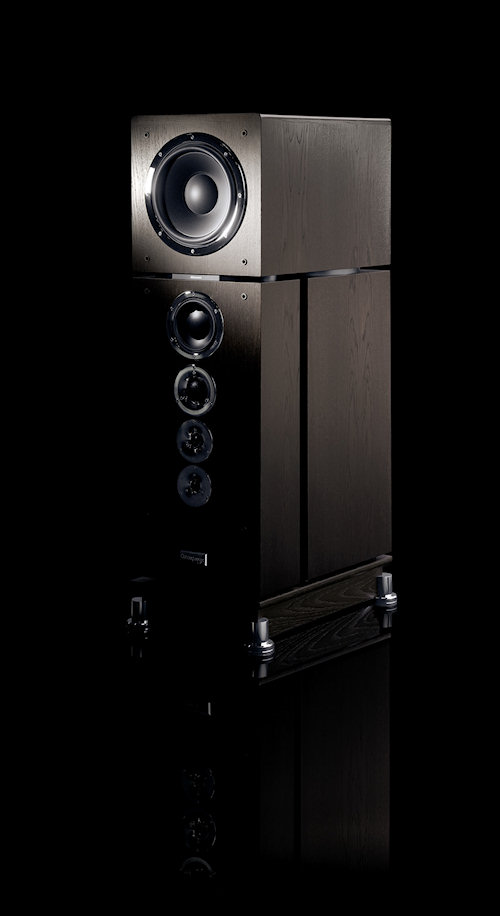Looking at Stereophile's vertical dispersion graphs, there is almost always a large suckout when listening above the tweeter's axis. I guess because of some interference from the midrange driver below it. They recommend putting the speaker on high stands and listening below the tweeter's axis. But I don't want high stands and what if I am listening standing up?
So why don't more speakers have the woofer on top like some Denon / Mission loudspeakers?
Happy Thanksgiving
So why don't more speakers have the woofer on top like some Denon / Mission loudspeakers?
Happy Thanksgiving
Because tweeter produces higher frequencies hences placed higher? j/k
Because if we put the bookshelves at the table the tweeters will be at the same height as the ears.
I don't believe in bookshelves on stands, simply because if I have the space I'd be going for bigger stuff.
Because if we put the bookshelves at the table the tweeters will be at the same height as the ears.
I don't believe in bookshelves on stands, simply because if I have the space I'd be going for bigger stuff.
A speaker that does not have a L-R characteristic through the crossover has some degree of lobe steering.
If you put the baas/mid, or mid above the tweeter the lobe steers upward instead of downward, lessening its effect, because it lessens floor reflection of the lobe.
rcw.
If you put the baas/mid, or mid above the tweeter the lobe steers upward instead of downward, lessening its effect, because it lessens floor reflection of the lobe.
rcw.
psychologically i like to have bass closer to the ground.
birds sing on the trees while diesel submarines run below sea level.
it just makes no sense to have treble coming from the ground and bass from the top.
bass is produced by heavy things while treble by light. heavier things tend to be placed lower.
why don't you screw the subwoofer to the ceiling ?
birds sing on the trees while diesel submarines run below sea level.
it just makes no sense to have treble coming from the ground and bass from the top.
bass is produced by heavy things while treble by light. heavier things tend to be placed lower.
why don't you screw the subwoofer to the ceiling ?
Well for me when I just did it the problem wasn't localization of the drivers it was a suckout in the off axis FR. What do you mean specifically about "properly done" xover.
All systems that have non-coincident drivers will have lobes in the vertical direction if the speakers are oriented vertically. How wide the main lobe is, where it is, and how many there are are all functions of the many variables involved in the crossover. No crossover can elliminate these issues, but judiciuos choice of the various options can make the situation more tolerable. There should not be a "hole" within the first 15 vertical degrees, thats not too hard, and when this is done you have to be pretty close to the speaker to be in this null from seating to standing. Flipping the mid and tweeter does not fix the problem, just makes it different. The lobes are very sensitive to the total phase differences through the crossover and this makes the design pretty sensitive in this regard.
Thanks. I am very close to these speakers almost texas headphone orientation when I started to hear the null. In theory my setup should be somewhat phase linear through the crossover region - at least before it hits the drivers. I am using a phase offset to correct the LR2 and it's phase distortions on these monitors. I may have just not had them up high enough but I really didn't want to redo my entire setup so I sat low - the woofer was in the exact same place.
So could it be that the vertical lobe was reflecting on the floor or something causing a null? Or is it just the characteristics of these drivers?
So could it be that the vertical lobe was reflecting on the floor or something causing a null? Or is it just the characteristics of these drivers?
Last edited:
Or is it just the characteristics of these drivers?
It is ofcourse impossible to explain in a few lines, but mr Geddes made a good try
Any speaker is loaded with phase issues
Xovers are apart from response shaping mostly about introducing the right amount of phase allignment
Xovers are like the good medicine that cures illness
Last edited:
Xovers are like the good medicine that cures illness
point is crossover has nothing to do with tweeter being on top of the woofer.
the suckout can point up or down or both or neither regardless of whether the tweeter is on top or bottom.
calling multi-way speakers "ILL" was a slick troll there though
if you are suckout-phobic you can go coaxial:

or you can go ESL:
An externally hosted image should be here but it was not working when we last tested it.
but flipping the speaker upside down accomplishes nothing that can't be accomplished by the crossover.
Last edited:
Can't you just flip them upside down? Or would you need some sort of compensation if you did this?
Answered my first question at least on my system it sounds pretty bad.
You can if you change the filter, or you could buy one who already is "up side down"
Consequence by Dynaudio has been "up side down" for more then 25years and now they released Consequence Ultimate Edition in "silver or gold"


quick review from : blog.stereophile.com
"The unusual array of upper-frequency drive-units places each unit farther away than the one next lower in frequency from the ears of a seated listener, which, in effect, time-aligns their outputs, allowing Dynaudio to use primarily first-order crossover filters. The sound of a familiar Patricia Barber track was effortlessly natural and uncolored, but I couldn't escape the impression that I was looking down on the singer from the concert-hall balcony rather than up at at her from the stall seats. "
Last edited:
bringing Dynaudio up should be made against forum rules.
they need to rename their company to douchebag technology.
the most infuriating thing about their gimmicks is that they balance them out with just enough real science to effectively obscure what they are.
they need to rename their company to douchebag technology.
the most infuriating thing about their gimmicks is that they balance them out with just enough real science to effectively obscure what they are.
Last edited:
It is ofcourse impossible to explain in a few lines, but mr Geddes made a good try
Any speaker is loaded with phase issues
Xovers are apart from response shaping mostly about introducing the right amount of phase allignment
Xovers are like the good medicine that cures illness
Yeah, I figured it was too much of a simple question to a complex problem. I think the short simple answer is that these speakers which I did not make were optimized to be setup with the tweeter on top. I guess I was hoping it could be deduced to something simple like acoustic spacing compensation. The company is the same that makes Mission speakers so the drivers look pretty similar but their design philosophy seems to be to make and tweak the drivers to fit the design/box/crossover and not the other way around. So it's probably safe to say that the tweeters had there polar pattern manipulated through magnet analysis/modeling.
As far as I am aware this scheme was originally used with speakers having 3rd. order crossovers.
These have flat power summing properties that were said to be preferred by listeners, but as Linkwitz pointed out as you sweep a signal through the crossover region the vertical lobe starts tilting downward, reaching its maximum tilt when the output of the two drivers is equal.
Reversing the positions of the drivers lessens the effect of this lobe steering partially due to the effect claimed by Dynaudio, and, (according to what I have read by Mission, Spendor and the like), by avoiding a rapid change in floor reflection.
rcw.
These have flat power summing properties that were said to be preferred by listeners, but as Linkwitz pointed out as you sweep a signal through the crossover region the vertical lobe starts tilting downward, reaching its maximum tilt when the output of the two drivers is equal.
Reversing the positions of the drivers lessens the effect of this lobe steering partially due to the effect claimed by Dynaudio, and, (according to what I have read by Mission, Spendor and the like), by avoiding a rapid change in floor reflection.
rcw.
Xovers are like the good medicine that cures illness
Althou in far too many cases the cure is worse than the illness....
dave
- Home
- Loudspeakers
- Multi-Way
- Why is the tweeter above the midrange/ woofer?
